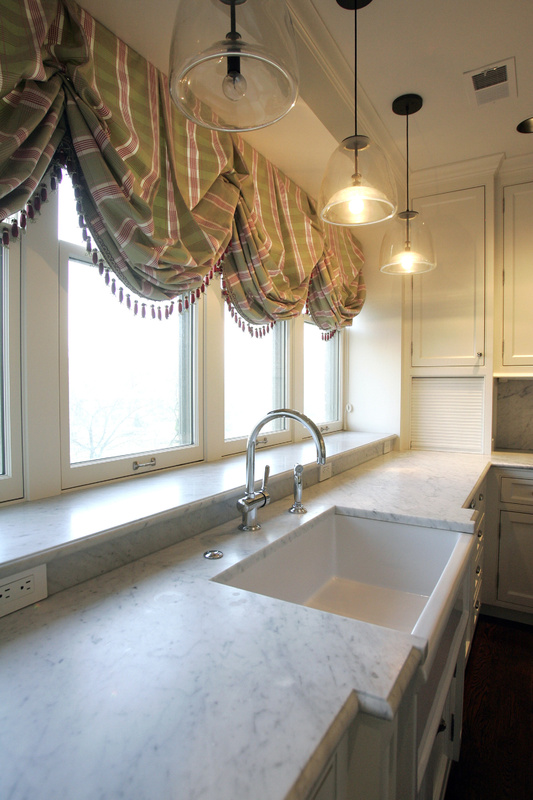What might the gray-streaked stone atop your heirloom furniture have in common with a public statue?
Both are made of Carrara marble, quarried in Italy and long used in furniture as well as statues and fountains.
“Carrara marble has a timeless look,” Amy Sanders of International Materials of Design says. “It’s not conservative, but it’s not glitzy.”
Carrara is a white marble heavily streaked with small gray veins. Also popular (and roughly three times as expensive) is Calacatta gold, which is a brighter white with fewer (but usually larger) veins of brown, gold or green, depending on where it was quarried.
White marble can bring class to a kitchen, bathroom, fireplace or entryway. Because marble comes in the form of tiles, slabs, mosaics and moldings, homeowners often finish an entire room for a stunning look, says Leslie Erickson of Carthage Marble in Kansas City.
The cost of decking the room can add up quickly, particularly if the fabrication is detailed, but there are cost-conscious ways to add white marble to a home.
“Consider resurfacing small areas that are focal points of a room, like a kitchen island or a coffee or end table,” Erickson says. It’s also common for customers to buy marble to fit a favorite table base and replace a worn or ugly top.
For projects such as tables and even small bathroom vanities and backsplashes, Erickson suggests marble remnants, which can cost less than 40 percent of the original price. For a small vanity, say 2 feet by 4 feet, seek remnants from slab and tiles or mosaics, Erickson says.
Other less expensive options include a sundry tower from Pottery Barn ($399) with a Carrara marble top or a “Carrara-style” marble table from CB2 ($299; www.cb2.com ).
Whatever the use — but particularly in a kitchen or bathroom — be aware that marble is a porous material. Some homeowners seek the look of worn, aged marble because of its natural beauty, says Katie Gruenewalk of Kitchen Studio in Kansas City, Mo.
“But if you want it pristine and perfect, it may not be the right option,” she says.
Care of marble starts with choice of finish. Polished marble has a vibrant shine, Sue Shinneman of Kitchen Studio says. But acidic foods such as juice or mayonnaise easily etch polished marble, resulting in dull marks. Periodically, you will have to have it sanded down and re-polished.
Homeowners can avoid re-polishing by having the marble honed or “roughed up” for an antiqued look that will wear better, Shinneman says.
Send questions/comments to the editors.


